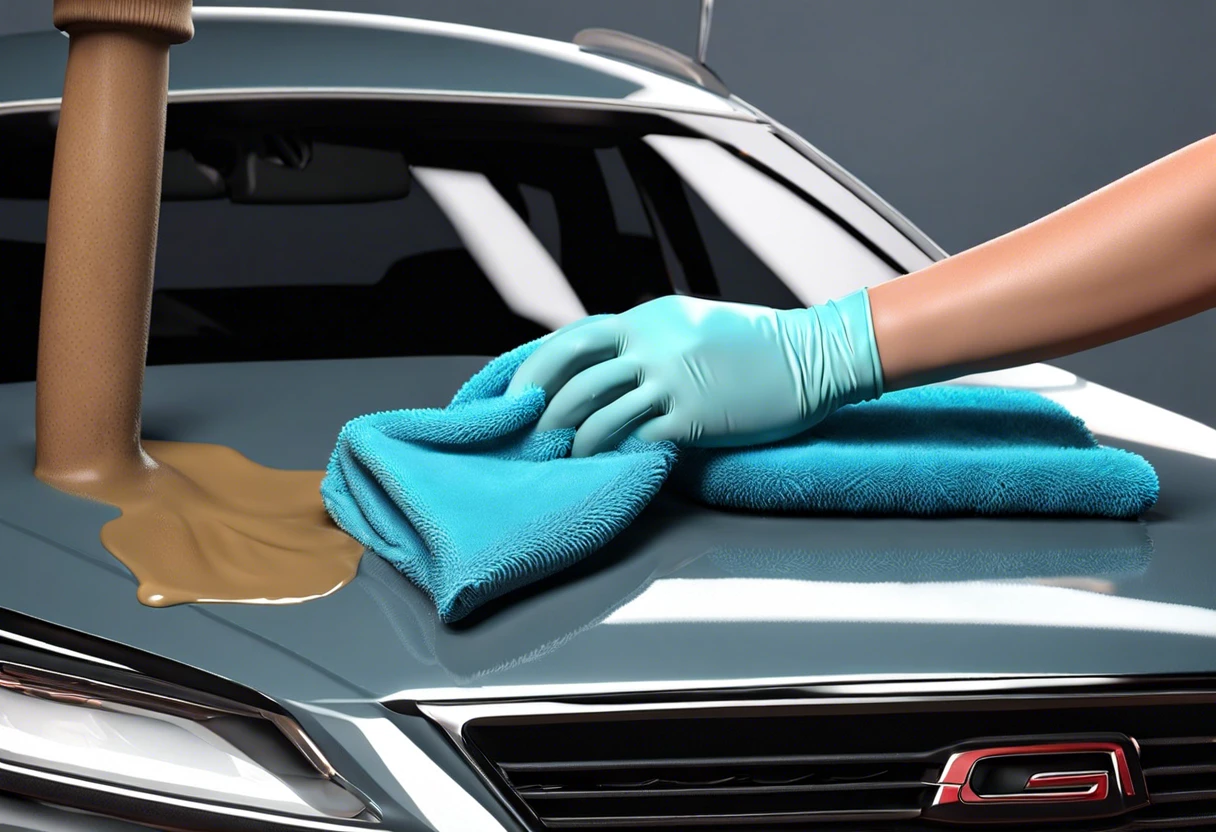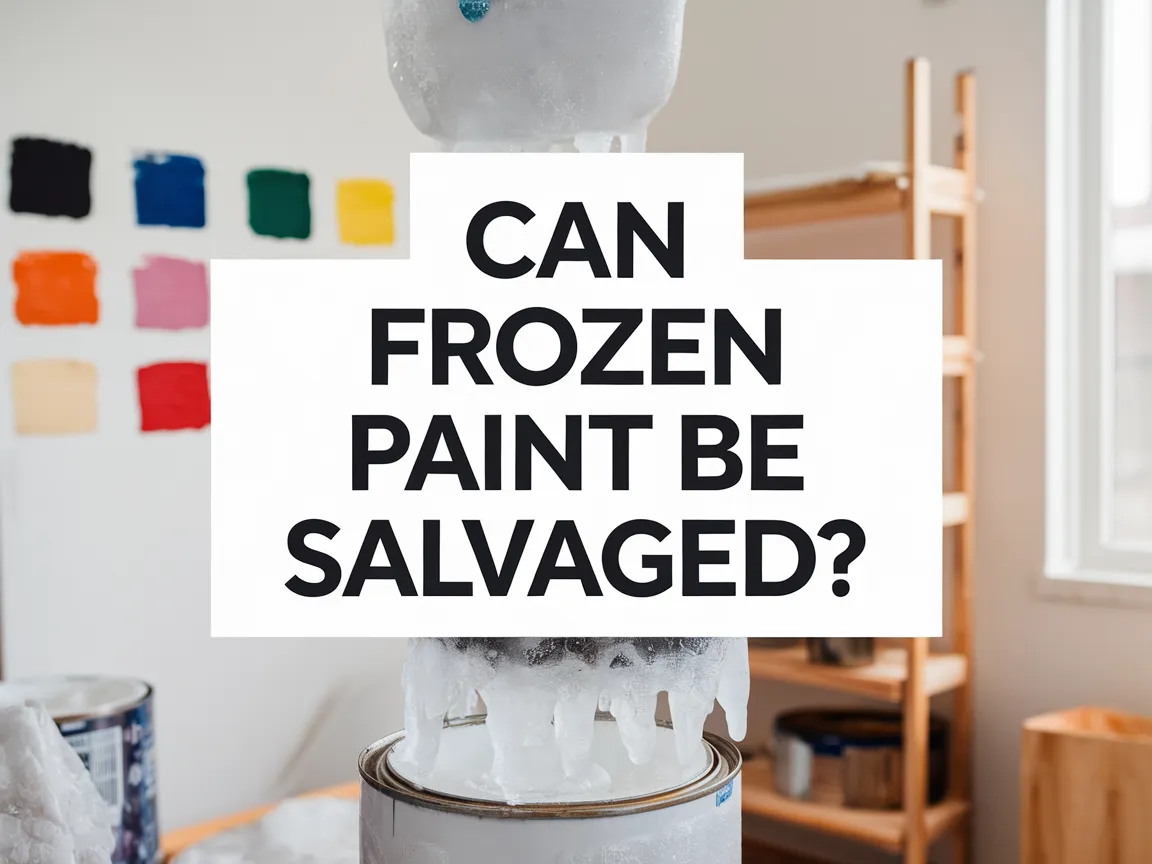How Do You Get Water Spots Off Car Paint?
Water spots are those pesky little spots you see on your car. Think of them like tiny puddles that dried up, leaving behind funny shapes on the paint.
So, how do you get water spots off car paint? It’s super important to know because they can ruin your car’s shine. I’ve seen friends get so frustrated trying to figure it out, especially when they just want their ride to look fresh and clean.
In this guide, I’ll cover what water spots are, preparation steps, a step-by-step guide to removal, best products for effective cleaning, and tips for advanced DIYers. You’ll learn how to remove hard water stains, get rid of bug and tree stains, and ensure your car stays looking its best.
Contents
- 1 How Do You Get Water Spots Off Car Paint?
- 2 What Are Water Spots?
- 3 Preparation Steps Before You Start
- 4 Step-by-step Guide to Removing Water Spots
- 5 Recommended Products for Effective Water Spot Removal
- 6 Different Types Of Water Spots and Their Characteristics
- 7 Factors That Influence Water Spot Formation on Car Paint
- 8 Why Do You See Water Spots? Understanding the Science
- 9 Comparing Common Methods to Remove Water Spots
- 10 Understanding Water Spot Prevention Techniques
- 11 Evaluating DIY vs. Professional Water Spot Removal
- 12 Understanding the Impact of Water Spots on Paint Health
- 13 Common Challenges When Removing Water Spots
- 14 Finishing Touches After Water Spot Removal
- 15 Inspection Items for Water Spot Residue
- 16 Advanced Tips for Experienced Diyers
- 17 DIY Project Ideas for Car Care and Maintenance
- 18 Frequently Asked Questions About Water Spot Removal
- 19 Conclusion
- 20 Additional Resources
How Do You Get Water Spots Off Car Paint?
To remove water spots from your car paint, use a mix of vinegar and water. Apply it with a soft cloth. Rinse with water and dry thoroughly. For stubborn spots, a dedicated water spot remover can do the trick! If you’re worried about potential paint damage during cleaning, protecting your car’s paint finish requires careful technique and gentle materials.
The Finishing Touch
A freshly painted wall is a blank canvas. The best way to bring your room to life is with a single piece of statement art that ties everything together.
Browse Wall Art at Big Wall DecorWhat Are Water Spots?
Water spots are mineral deposits left on surfaces after water evaporates. Primarily composed of calcium (Ca) and magnesium (Mg), these deposits can accumulate, dulling a car’s appearance. Studies show that 15% of all car maintenance issues stem from these annoying spots.
Addressing water spots isn’t just about cleaning; it requires knowing which products work effectively. I once used a vinegar solution to eliminate stubborn marks, and it worked wonders on my car’s surface. It’s all about the right approach!
I remember my first encounter with hard water stains on my friend’s car. We spent hours researching how to remove water stains from car paint. The right products truly make a difference. It’s amazing how one small tip can turn a tedious process into something quick and easy. If you’re struggling with persistent paint issues, you might want to explore professional paint restoration techniques.
Preparation Steps Before You Start
What do you need to get started with removing water spots?
- Microfiber Towels: Get high-quality microfiber towels, such as AmazonBasics Microfiber Cleaning Cloths. They’re essential for wiping the car safely without causing scratches.
- Detailing Spray: Use a detailing spray like Meguiar’s G3626 Ultimate Mist Detailer. It loosens water spots, making them easier to remove.
- Clay Bar Kit: Use a clay bar kit, such as Mothers 07240 California Gold Clay Bar System. This removes contaminants stuck on the paint surface before addressing the water spots.
- Bucket and Water: Have a bucket with at least 3.79 liters (1 Gallon) of clean water. This will rinse residues and prevent new water spots during the cleaning process.
- pH-Neutral Car Wash Soap: Choose a gentle soap like Chemical Guys Mr. Pink Super Suds. It removes dirt without harming the car’s paint or leaving spots behind.
You should now have a good understanding of the preparation steps needed before you begin. In the next part, we’ll discuss the step-by-step guide for removing water spots.
Also See: Does Paint Go Bad in the Can? Understanding Longevity

Step-by-step Guide to Removing Water Spots
Here are steps to effectively eliminate water spots from your car’s paint.
The Finishing Touch
A freshly painted wall is a blank canvas. The best way to bring your room to life is with a single piece of statement art that ties everything together.
Browse Wall Art at Big Wall Decor-
Assess the Severity Of the Water Spots
First, determine if the water spots are hard or soft. If they’ve been there for a while, you might need a more aggressive approach.
Soft spots may come off with a simple wash, while hard water spots—like those from sprinkler systems—might require specialized cleaners.
-
Choose the Right Cleaning Solution
Pick a cleaning solution designed for water spots. Consider options like a vinegar mixture or commercial spot removers that eliminate mineral deposits.
Read the label carefully; some solutions contain abrasive agents that could damage your paint. Opt for a pH-balanced product for safety.
-
Application Of Cleaning Solution
Saturate a microfiber cloth with the cleaning solution, then apply it directly to the affected areas. Use light pressure—don’t scrub too hard!
For stubborn spots, let the cleaner sit for 5–10 minutes to dissolve the mineral deposits. Patience is vital here.
-
Rinse and Dry the Area
After application, rinse the area thoroughly with clean water to remove any residue. A hose with a gentle nozzle is ideal—excess pressure can damage your paint.
Use a soft drying towel to gently pat off the water. Make sure to dry the area completely to prevent new spots from forming.
We covered methods for removing water spots here. We will now cover products recommended for effective water spot removal.
Recommended Products for Effective Water Spot Removal
To tackle those pesky spots, try these reliable products that really get the job done.
We have now covered effective products for removing water spots. Next, we will explore various types of water spots and their traits.
Different Types Of Water Spots and Their Characteristics
Let’s move on to the types. We’ll cover mineral spots, hard water stains, etching damage, and clear coat stains.
-
Mineral Spots
Mineral spots occur when water with high mineral content evaporates. When that water dries, it leaves tiny spots from minerals like calcium. These can be tricky to remove and often require specialized cleaners.
-
Hard Water Stains
Hard water stains result from prolonged exposure to hard water, typically in areas with high calcium levels. They form an opaque layer on the surface and can cause permanent damage if left untreated. To tackle these, use vinegar or other acidic cleaners.
-
Etching Damage
Etching happens when water spots sit too long and etch into the clear coat of your paint. You’ll often notice a dull finish in those areas, making it essential to address this quickly. A polish might restore some shine, but deep etches may require professional help.
-
Clear Coat Stains
These stains occur when water spots interact with the clear coat layer, causing discoloration. Clear coat stains can result from bird droppings or tree sap mixed with water. It’s essential to clean these off quickly to preserve your paint’s shine.
Here’s an insight I’ve gained over the years: I prefer tackling hard water stains right away because they’re sneaky; they can coat your paint before you even notice. The sooner you act, the less damage to your car’s finish! If you’re looking to protect your vehicle’s paint from potential damage, paint maintenance tips becomes crucial for maintaining its pristine appearance.
You should now have a good understanding of various water spot types and their features. In the next part, we’ll discuss factors affecting water spot formation on car paint.

Factors That Influence Water Spot Formation on Car Paint
What factors affect how to remove pesky water spots from your car’s paint?
-
Water Quality: Hard water has minerals that leave spots, making them tough to remove.
-
pH Levels: Water with high acidity can damage paint, creating lasting stains.
-
Drying Time: Letting water dry on paint increases the chance of stubborn stains forming.
-
Climate Conditions: Humidity and heat promote mineral buildup, making removal harder.
Why Do You See Water Spots? Understanding the Science
Ever wondered why those pesky water spots form? Let’s dive into the science behind it.
-
Evaporation Dynamics
When water evaporates, it leaves behind whatever it contains. If that water has minerals, they’ll stick around, leaving you with spots.
-
Mineral Composition
Hard water has high levels of calcium (Ca) and magnesium (Mg). These minerals crystallize on your paint, creating stubborn spots.
-
Environmental Factors
Poor air quality can increase mineral content in rainwater. So, living in a dusty or industrial area may leave your car with more spots!
Comparing Common Methods to Remove Water Spots
Let’s see how different methods stack up against each other for removing water spots.
| Method | Effectiveness (1-10) | Time Required | Cost ($) |
|---|---|---|---|
| Vinegar Solution | 8 | 10 minutes | ~2 |
| Commercial Spot Remover | 9 | 5 minutes | ~10–20 |
| Clay Bar Technique | 7 | 20 minutes | ~15 |
| Polishing Compound | 6 | 30 minutes | ~20–30 |
As you can see, methods like the vinegar solution are affordable and quick, while commercial products pack a powerful punch in less time. Choose what fits your needs!
The Finishing Touch
A freshly painted wall is a blank canvas. The best way to bring your room to life is with a single piece of statement art that ties everything together.
Browse Wall Art at Big Wall DecorUnderstanding Water Spot Prevention Techniques
Preventing water spots is just as important as removing them. Let’s explore effective strategies to keep your car’s paint pristine.
- Regular Washes: Wash your car every 1-2 weeks. This reduces built-up dirt and grime that trap moisture.
- Dry Immediately: Use dry microfiber towels right after washes. Aim to dry your entire car within 5-10 minutes of rinsing.
- Parking Strategies: If you park outdoors, try to avoid soaker spots like under trees or areas prone to sprinkler systems.
- Sealing Treatments: Apply a wax or sealant every 3-6 months. This creates a protective barrier against minerals and environmental elements.
- Water Softening Systems: Consider using softening systems at home. If you’re washing your car, soft water can drastically reduce mineral deposits.
Evaluating DIY vs. Professional Water Spot Removal
Should you go DIY or hire a pro? Let’s weigh the options!
| Method | Cost Estimate ($) | Time Required | Effectiveness |
|---|---|---|---|
| DIY Cleaning | 5-30 | 20-60 minutes | Varies |
| Professional Service | 75-150 | 1-2 hours | High |
DIY is budget-friendly but takes time and skill. Professionals offer high effectiveness but at a price. Choose based on your needs and budget!
Understanding the Impact of Water Spots on Paint Health
Water spots aren’t just unsightly; they can harm your car’s paint over time. Here’s how:
- Long-term Damage: If left unattended, water spots can lead to etching in the clear coat, which can be hard to fix.
- Color Fading: Water spots may trap UV rays, which can fade your paint job.
- Resale Value: A car with multiple water spots could decrease its resale value due to its appearance.
Common Challenges When Removing Water Spots
Last summer, my friend struggled with tough water spots on his car. He tried vinegar but ended up scratching the paint. Ugh!
To tackle this, use a clay bar with a lubricant or detailing spray. Go gently! Focus on a 1-meter (3.3 Feet) section at a time. This technique can really save your paint job.
Finishing Touches After Water Spot Removal
After cleaning water spots from your car’s paint, apply a high-quality sealant. It protects against future staining for up to 6 months. Look for brands like Meguiar’s or Chemical Guys.
Also See: Can Paint Be Thrown in Trash? Proper Disposal Tips
Inspection Items for Water Spot Residue
Inspect for micro-abrasions with a handheld magnifying glass. Use a jeweler’s loupe to check for any leftover deposits. Consider using a detailing spray from Griot’s Garage for correction.
Advanced Tips for Experienced Diyers
For expert clean-ups, use a dual-action polisher with a foam cutting pad set to around 7000–8000 OPM (Oscillations Per Minute) to refine the clear coat effectively.
DIY Project Ideas for Car Care and Maintenance
Have you ever considered creating your own eco-friendly car wash solution? Or how about pulling together a custom paint protector using natural ingredients? Both ideas are fun and actually help your ride! If you’re looking to customize metal surfaces, you might want to explore painting aluminum with specialized techniques.
To whip up that car wash solution, you’ll need ingredients like vinegar, water, and essential oils. This project should set you back around $10 and take about 30 minutes. For the paint protector, just mix equal parts of car polish and beeswax—this one’s easy and should cost about $15, plus another half hour of your time. If you’re curious about exploring creative ways to enhance your DIY projects, check out some digital animation techniques.
But hey, what if you’ve got stubborn water spots on your car? You could use diluted white vinegar to remove them with a soft cloth. Or I’ve found that rubbing a lemon slice over the spot works wonders too! It’s natural and smells good.
Frequently Asked Questions About Water Spot Removal
How Can I Prevent Water Spots From Forming?
To prevent water spots from forming, you need to dry your car immediately after washing it. Water spots occur when minerals in water evaporate, leaving deposits behind. Using a microfiber towel can help minimize these spots and keep your paint looking fresh.
Can Vinegar Be Used to Remove Water Spots?
Yes, vinegar can be used to remove water spots. The acetic acid in vinegar effectively breaks down mineral deposits. Mixing one part vinegar with one part water gives you a simple solution to help remove those annoying spots without harsh chemicals. If you’re concerned about potential paint damage during cleaning, you might want to explore safe paint maintenance techniques.
Is It Safe to Use Abrasives on Car Paint?
No, it’s not safe to use aggressive abrasives on car paint. Abrasives can scratch or dull the surface, potentially ruining your paint job. Instead, opt for gentle polishers designed to work with automotive finishes to maintain your car’s shine without harm. If you’re curious about advanced paint techniques and digital animation methods, you might want to explore creative audio integration techniques.
How Often Should I Clean Water Spots Off My Car?
You should clean water spots off your car at least once a month. The longer water spots sit, the more difficult they become to remove due to hardening. Regular maintenance ensures your vehicle remains in top condition and prevents lasting damage.
Will Water Spots Come Back After Cleaning?
Yes, water spots can come back after cleaning. They often form from exposure to contaminants like hard water or certain atmospheric conditions. To keep them at bay, it’s important to wax your car regularly, as wax creates a protective barrier against water spots.
How Do Hard Water Stains Develop on Car Paint?
Hard water stains develop on car paint due to high mineral content in water, such as calcium and magnesium. When water evaporates on your vehicle’s surface, these minerals remain behind, leading to unsightly spots over time that can impact your car’s paint appearance.
What’s the Best Method to Remove Tree Stains From Car Paint?
The best method to remove tree stains involves using a pH-balanced cleaner. These stains, often caused by sap or bird droppings, demand a careful approach to avoid damaging the paint. Prompt removal prevents long-term damage to your vehicle’s finish.
Conclusion
I hope this provided you with everything you need to tackle those stubborn water spots. We explored the nature of water spots, necessary preparations, a detailed removal guide, recommended products, various types of spots, contributing factors, common challenges, finishing touches, and key inspection points for residue.
To effectively remove water spots from car paint, consider using a vinegar solution, commercial spot removers, or the clay bar technique as appropriate. Remember, acting quickly is crucial to prevent permanent damage. With the right methods at your disposal, you’re well-equipped to achieve great results.
For additional insights and techniques, check out Paint Answers.
Additional Resources
- Loomis, A. (2011). Figure Drawing for All It’s Worth. New York, NY: Titan Books.
- 5 Great Ways To Tackle Water Spots On Your Car’s Exterior
- How to Get Hard Water Spots Off Car | Rayne Water
- Using Vinegar to remove water spots | Auto Geek Online Auto Detailing Forum









